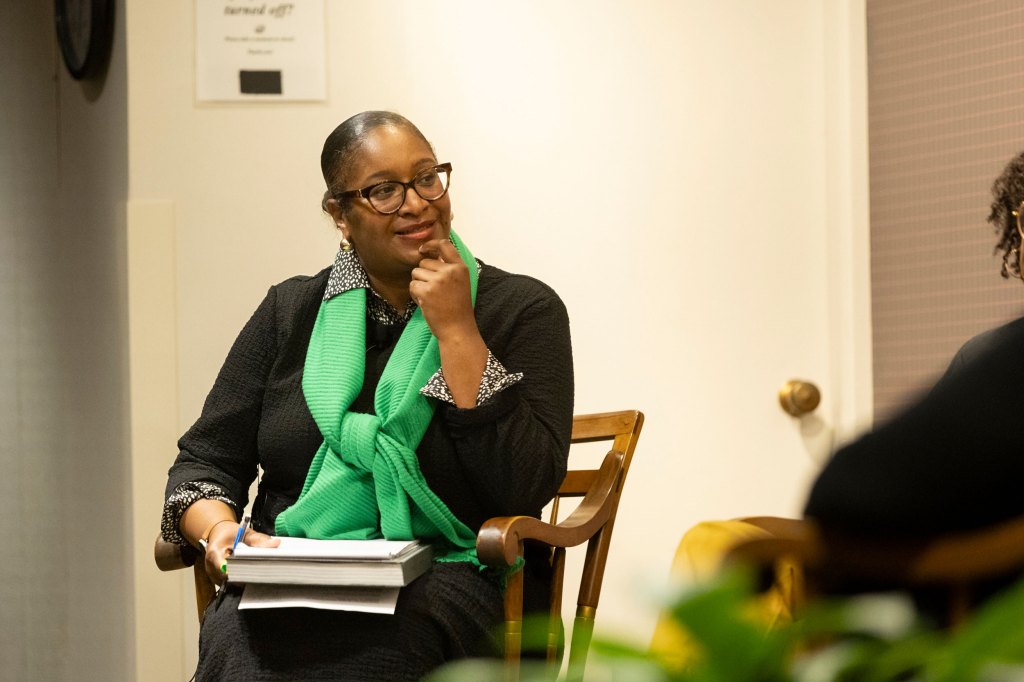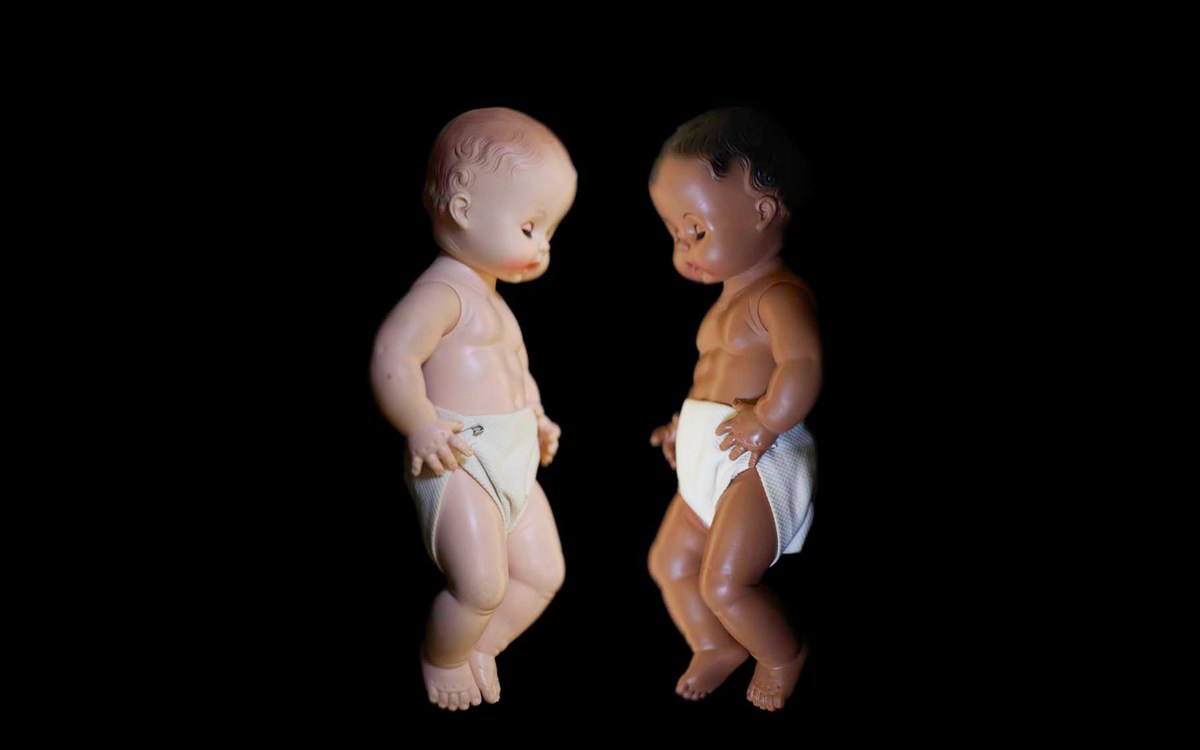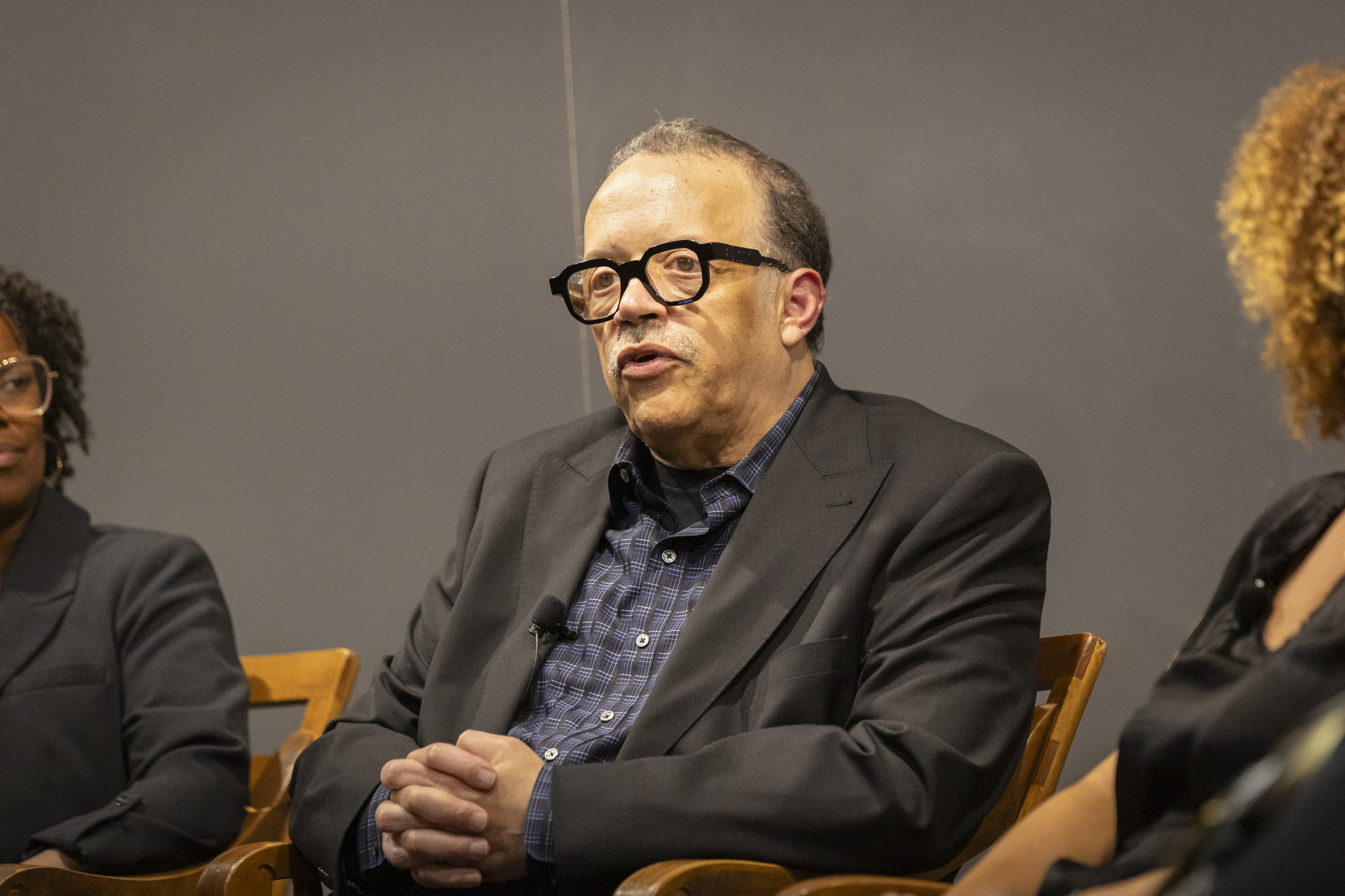For more than 30 years, photographer Wendel White has dedicated his craft to documenting Black lives throughout American history. In his latest project, “Manifest: Thirteen Colonies,” White turned his lens to African American materials held in collections throughout the 13 original U.S. colonies.
Among White’s 235 subjects are hair clippings from Frederick Douglass and Harriet Beecher Stowe, a Civil War-era brogan-style shoe, as well as photographs, diaries, and documents.
He came across the Civil War-era leather and wood-soled shoe at the North Carolina Museum of History in Raleigh. While the shoe does not have a known connection with Black or white individuals, White said it made him realize how his work is not “really just about Black life, but how Black life is defined by virtual whiteness.” The collection in North Carolina held particular significance for White, who shared that his great-grandfather escaped enslavement and joined the Union Army in North Carolina.

In an intimate conversation with curators and scholars of Black history and visual arts on Sept. 26, White launched his new monograph, “Wendel A. White: Manifest | Thirteen Colonies,” which accompanies his exhibition at the Peabody Museum of Archaeology & Ethnology.
“I am increasingly interested in the residual power of the past to inhabit material remains,” White said. “The ability of objects to transcend the moment suggests a remarkable mechanism for golden time, bringing the past and the present into a shared space.
“These artifacts are the forensic evidence of Black life and events in the United States,” he continued. “The photographs form a reliquary and a survey of the impulse and motivation to preserve history and memory.”
Faculty of Arts and Sciences chief campus curator Brenda Tindal, who moderated the conversation at the Peabody’s Geological Lecture Hall and contributed an essay to White’s book, kicked off the hourlong discussion by crediting the photographer for helping to inform and visualize Black history and culture.
“I’ve been sitting with this work for several months, and in some ways, this tome has become a bit of a prism through which the identity and the quotidian contours of Black life and culture come into such sharp relief,” Tindal said.
White and Tindal, who was recently appointed co-chair of the memorial committee for the Harvard & Legacy of Slavery Initiative, were joined by fellow contributors Cheryl Finley, Atlanta University Center Art History + Curatorial Studies Collective; Leigh Raiford, University of California, Berkeley; and Deborah Willis, Tisch School of the Arts, New York University.
While the conversation largely focused on White’s latest project, audiences also learned about his process and attention to detail. Raiford said she was struck by “the way the objects are made to dance” in White’s photography and “the way that they’re held in this warm light that reminds us to have a certain kind of reference for the past and for history.” It was a sentiment echoed by fellow panelists, who praised White for his ability to help viewers reimagine the lives of Black people in the past.
“There seems to be this really sort of subjective narration of Black culture and life, and it’s often through this very narrow contour from slavery to segregation to civil rights. That narrative really situates Black life and culture within this really over-determined domain of struggle,” Tindal said, before asking the panel how archives of African American material culture in public collections help transform the historical perception and understanding of Black history.
Willis pointed to how White frames objects in his project to help uncover stories about love, protection, and respect, and thus move away from the narrow view of Black history.
Special attention was also given to White’s artistic choice to blur part of his photographs. While many of the objects photographed for the project sharply contrast to the black velvet they are placed on, certain areas of each item are blurred.
“One of the things that was helpful for me is that I felt like the blur held back some of the violence of the archives,” said Tracey Hucks, Victor S. Thomas Professor of Africana Religious Studies at Harvard Divinity School and Suzanne Young Murray Professor at the Radcliffe Institute for Advanced Study, from the audience.
White began this project in 2021, after being named a Robert Garner Fellow in Photography. The Peabody grants the annual fellowship to a photographer to document the human condition around the world. Forty-six images of White’s latest work are on display at the Peabody in an exhibition through April 13, 2025.
Related story
-
 Arts & Culture
Arts & CultureManifesting Black history in 3D
From Frederick Douglass’ hair to Malcolm X’s tape recorder, Wendel White’s new book puts an abundance of artifacts on display
4 min read
Source link

